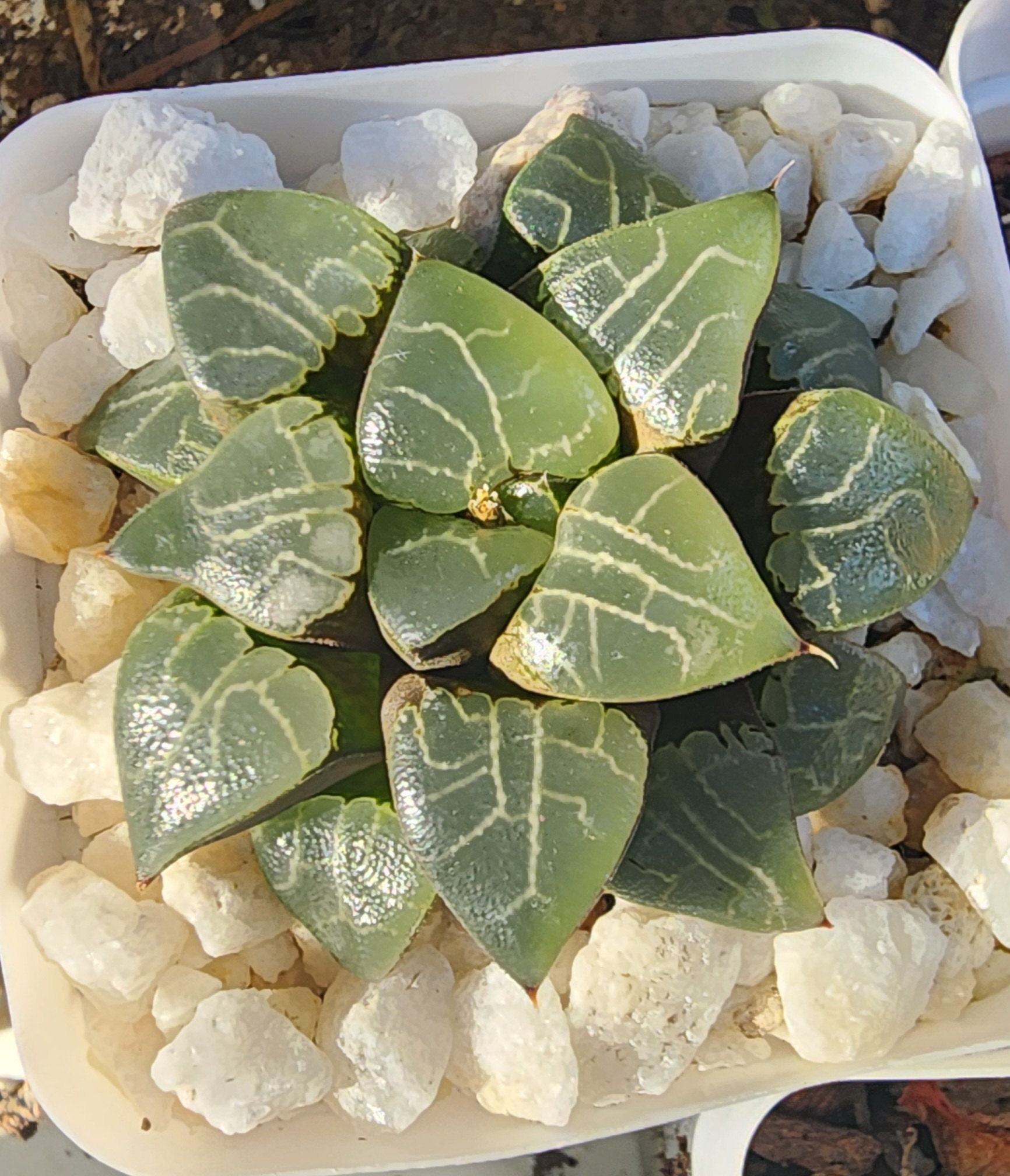Introduction:
Haworthia 'Variegated Moon Shadow' is a striking and resilient succulent, perfect for both beginners and experienced plant enthusiasts. Known for its rosette shape and unique variegation, this plant adds a touch of elegance to any indoor garden. In this guide, we’ll delve into the specifics of caring for your Haworthia to ensure it thrives and beautifies your space.
Light Requirements:
Haworthias, including the 'Variegated Moon Shadow', prefer bright but indirect light. They do well in east or west-facing windows where they receive gentle morning or late afternoon sun. Direct sunlight, especially during the harsh midday hours, can cause their leaves to scorch, diminishing their vibrant appearance. If natural light is limited, consider using a grow light to provide supplemental lighting.
Watering Techniques:
Water is a crucial factor in the care of Haworthias. They employ a 'soak and dry' method for watering. Wait until the soil is completely dry before thoroughly watering the plant. This may mean watering every couple of weeks, but the frequency can vary based on factors like pot size, soil type, and environmental conditions. Always avoid letting the plant sit in water, as this can cause root rot, a common issue with overwatered succulents.
Soil and Potting Mix:
A well-draining soil mix is essential for Haworthia 'Variegated Moon Shadow'. Commercial cactus or succulent mixes are ideal, but you can also create your mix by blending regular potting soil with sand or perlite. This ensures quick drainage and prevents moisture retention, which can be detrimental to the plant's roots.
Choosing the Right Pot:
The pot you choose for your Haworthia should have adequate drainage holes to avoid water accumulation. Terracotta pots are excellent choices due to their porous nature, allowing the soil to dry more uniformly. When selecting a pot size, remember that Haworthias have relatively small root systems, so a pot that's too large can retain unnecessary moisture.
Temperature and Environment:
Haworthia 'Variegated Moon Shadow' thrives in temperatures between 60-85°F (15-29°C). They are not cold-hardy, so it's essential to keep them in a warm environment, especially during winter. If you live in an area with freezing temperatures, ensure your plant is kept indoors or in a warm greenhouse.
Humidity Considerations:
These succulents are not particularly fussy about humidity and do well in average indoor conditions. If you live in an exceptionally dry area, occasional misting can be beneficial, but it's generally not necessary.
Fertilizing for Growth:
Fertilizing your Haworthia can promote healthier, more vigorous growth. Use a diluted succulent fertilizer once a month during the spring and summer. It's crucial to reduce or stop fertilizing during the winter months, as the plant enters a dormant phase and requires less nutrition.
Repotting and Root Care:
Repot your Haworthia every two to three years, or when it outgrows its current pot. Repotting allows you to refresh the soil, inspect and trim the roots if necessary, and provide a new growth environment. Be gentle during the repotting process to avoid damaging the plant's delicate roots.
Dealing with Pests and Diseases:
Keep an eye out for pests such as mealybugs, a common issue in succulents. If you spot pests, treat your Haworthia with an appropriate insecticide or a neem oil solution. Regularly inspecting your plant can help catch any issues early on.
Propagation Techniques:
Haworthia 'Variegated Moon Shadow' can be easily propagated from offsets, which are small plants that form at the base of the parent plant. Once they reach a manageable size, gently separate them and pot them individually. This is a great way to expand your collection or share it with friends and fellow plant lovers.
Caring for Haworthia 'Variegated Moon Shadow' is a rewarding experience. With the right balance of light, water, and care, your Haworthia will flourish and bring a unique aesthetic to your indoor garden. Remember, the key to successful plant care is observation and adjustment based on your plant's specific needs and environment.

